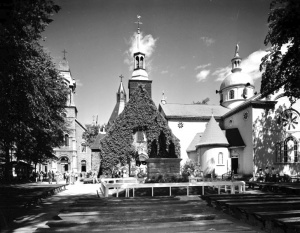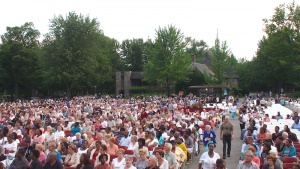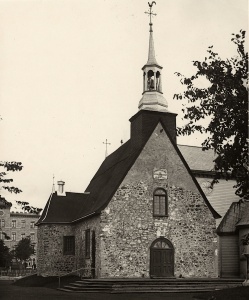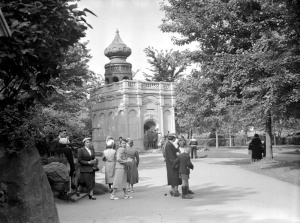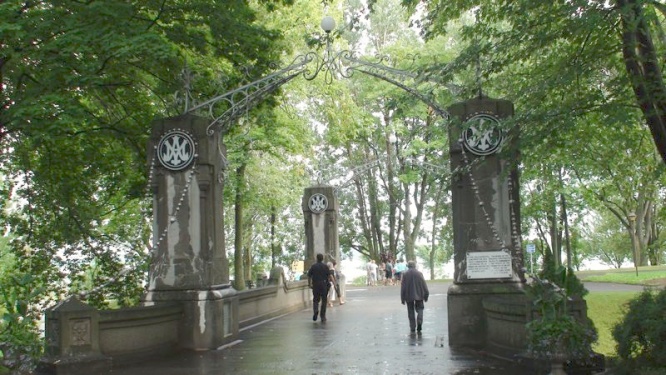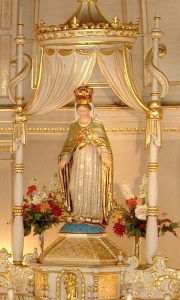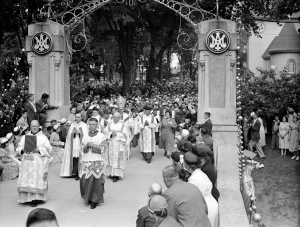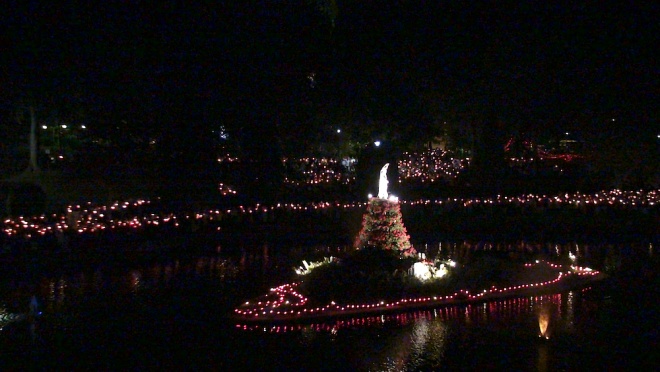The pilgrimage to Our Lady of the Cape Shrine, Quebec
par Couvrette, Sébastien
The largest North American pilgrimage site dedicated to the Virgin Mary is located at Cap-de-la-Madeleine in the Trois-Rivières region in Quebec. While the site itself has had religious significance since the French regime, the Sanctuaire Notre-Dame-du-Cap (Our Lady of the Cape Shrine) was consecrated in 1888, after two extraordinary events attributed to the Virgin Mary. The site, visited by many pilgrims every year, received its most illustrious visitor in 1984: Pope John Paul II. Despite the decline of religious practice in Quebec, the Shrine remains a unique meeting place for visitors and pilgrims of all ages and all ethnic origins.
Article disponible en français : Pèlerinage du Sanctuaire Notre-Dame-du-Cap, au Québec
The practice of pilgrimages
The pilgrimage is a cultural practice of popular devotion in Catholic countries. It generally takes the form of a solitary or group journey to a holy place as part of a spiritual process. Some of these places have in common the fact that they were founded as a result of a series of extraordinary events attributed to the Virgin Mary, such as apparitions, miracles or marvels. Among these are Our Lady of Fatima in Portugal, Our Lady of Guadalupe in Mexico, and Our Lady of Lourdes in France, which are visited every year by pilgrims from all over the world. In francophone America there are a number of places of devotion dedicated to the Virgin, including those of Notre-Dame-de-Lourdes in Sudbury, but the most important Marian pilgrimage takes place at Notre-Dame-du-Cap.
This shrine, founded in 1888 at Cap-de-la-Madeleine, is one of Quebec’s three great pilgrimage sites, the other two being Sainte-Anne-de-Beaupré and the Oratoire Saint-Joseph. Since the beginning of the twentieth century, the Shrine’s popularity has drawn pilgrims from all parts of Quebec. It receives hundreds of thousands of visitors each year.
Steps in construction of the site
By its location and development, the Shrine is an exceptional site, recalling to visitors its illustrious history and its religious significance. Its many monuments make it unique of its kind in Quebec. The oldest building, a stone church with a cedar-shingled roof, was constructed from 1714 to 1720 and is at the origin of the Shrine. Called the “petit Sanctuaire”, it is one of the oldest stone churches in Canada. A new church, opened in 1888, was demolished in 1963 to make way for the square in front of the present basilica. Some of its stones were kept to make an addition to the first church in 1973.
At the beginning of the twentieth century, in view of the growing popularity of the Shrine and their concern to ensure its development and continued existence, its directors asked that it be managed by the Oblates of Mary Immaculate. Since they arrived at the Shrine in 1902, the Oblates have contributed greatly to the unique character of the site. Beginning in 1906, they installed a Way of the Rosary bearing witness to the essential place of prayer in the history of the Shrine. The path leads to a series of bronze statues, cast in France – each representing one of the fifteen traditional mysteries of the rosary – which are meant to inspire pilgrims in the meditation that accompanies recitation of the rosary (NOTE 1).
The Oblates’ Way of the Rosary was installed in addition to the Way of the Cross built by the Franciscan Frédéric Jansoone at the end of the nineteenth century, which is a smaller-scale replica of the Jerusalem road to Calvary. Along the way are bronze statues depicting the stations of the cross. The path ends with a Calvary rock with a bronze of the crucifixion. In a cavity dug into the heart of the rock is a sculpture of the descent from the cross. Finally, the site includes a reproduction of the Tomb of Christ identical to that of the Church of the Holy Sepulchre in Jerusalem. In 1924 the Oblates built a magnificent stone bridge with giant rosaries in commemoration of the historical episode of the ice bridge, the first founding event of the Shrine. At the end of the 1930s, the Shrine park took on its present appearance, with the creation of an artificial lake, Lac Sainte-Marie, with a small island in the middle.
The first extraordinary event
In the 1870s, the church dating from the French regime was too small to receive the many inhabitants of Cap-de-la-Madeleine for masses and religious ceremonies. A decision was made to demolish the building and use the stones to build a new church. The other materials necessary would have to be obtained on the south shore of the Saint Lawrence, since there were no stones on the sandy shores of Cap-de-la-Madeleine.
In the winter of 1879, the parishioners were waiting for ice to form over the river, so that they could move the stones from one bank to the other. However, that year the weather was mild and the river was still not frozen at the beginning of March, despite the parishioners’ prayers. Father Luc Désilets prayed to Mary, promising her not to destroy the little church and to dedicate it to her if an ice bridge could be built before spring. In mid-March, against all expectations, an ice jam began to form between the two banks. The parishioners hurried to bring snow to help the ice to solidify. Soon a narrow ice road appeared, strong enough for horse-drawn sleds to make the two-kilometre crossing and bring tons of stones. Over the next days, the local people recited the rosary continually, to prevent any accident. Despite the fragile layer of ice that deteriorated quickly as loads of stone were carried across, their prayers were answered. The ice bridge, considered by many to be a miracle brought about by prayers and recitation of the rosary, was called the “Rosary Bridge”.
A second extraordinary event
A second event that occurred in 1888 confirmed the vocation of the site. The new church, built of the stones carried over the ice bridge, received parishioners in the early 1880s. To keep his promise to the Virgin, Father Désilets had the old church restored, to be dedicated to Mary. On 22 June 1888, Father Frédéric Jansoone officiated at the consecration ceremony before more than 5000 worshipers. The same evening, Father Frédéric, Father Désilets and another man were praying to the Virgin Mary in the small church. They then witnessed what was to be called the “miracle of the eyes”. According to testimony by the three men, the statue of the Virgin, whose eyes are usually lowered, looked straight ahead for several minutes. The statue, given by a parishioner in 1854 on the occasion of the promulgation of the dogma of the Immaculate Conception, still graces the main altar of the small church. This remarkable event marks the real beginning of the Shrine’s history. In 1904 a delegate of Pope Pius X crowned the statue, a procedure essential for making the site known, for it means that the Catholic Church recognizes the events attributed to it and the cult devoted to it (NOTE 2).
The golden age of Our Lady of the Cape Shrine
In the late 1940s, a first attested miracle of healing occurred at the Shrine: a pilgrim suffering from tuberculosis was cured. At this time a statue of the Virgin, called the Pilgrim Virgin, was making a tour of Canada over several years on an allegorical float representing a bridge adorned with rosaries. Its purpose was to make the Shrine known to Canadians and to attract pilgrims.
Early in the next decade, there was increased activity at the Shrine. As the first Marian year approached, corresponding to the centenary of promulgation of the dogma of the Immaculate Conception, worshipers took turns day and night to recite the rosary without interruption (NOTE 3). On the occasion of the Marian year 1954, the statue of the Virgin Mary was crowned a second time. The next year, construction began on the present Our Lady of the Cape Basilica, which was inaugurated in 1964. This spacious building, designed by the architect Adrien Dufresne, holds more than 1,500 visitors. Since the Second Vatican Council, which was held from 1962 to 1965, the Roman Catholic Church has encouraged active participation by lay worshipers in the Christian liturgy. In this important movement of religious reform, the Shrine has become a favourite site for expressing faith. In 1969 the second and most famous case of miraculous healing occurred: Claudette Larochelle, a woman suffering from muscular dystrophy, was healed. Her story further enhanced the reputation of the Shrine.
In the 1980s, many events marked the centenary of the Shrine’s founding and drew many visitors. In September 1984, Pope John Paul II made a pilgrimage there during a visit to Quebec. More than 75,000 people came for this unique occasion. Many young people of the Trois-Rivières area took an active part in preparations for the visit of John Paul II. After the papal visit, a tradition of annual pilgrimages for young people, known as Cap-Jeunesse, was begun.
The pilgrimage to the Shrine today
Since the beginning if the 2000s, visits to the Shrine have dropped considerably. Among the causes are an aging population and the decline of religious practice in Quebec. From more than 480,000 visitors in 1999, the number fell to about 290,000 in 2009. Despite it all, the site has remained a unique place where pilgrims from different Christian communities meet. At the end of July, members of the Quebec Italian community, en route for Sainte-Anne-de-Beaupré for the feast of St Anne (celebrated on 26 July), make a stop at Cap-de-la-Madeleine. On this occasion, many songs of celebration are sung in Italian at the Shrine. In the same way, every year at the Assumption, many masses and celebrations take place in Creole, because of the strong representation of pilgrims from the Haitian community.
August 15, the feast of the Assumption, is the most important day of the year for the Shrine, and attracts the most visitors. During the Novena of the Assumption, a period of nine days preceding the feast on 15 August, torchlight processions take place. In this ceremony, inspired by a tradition founded at Our Lady of Lourdes in France, pilgrims walk in procession at nightfall, holding candles and singing hymns dedicated to Mary. In these Marian celebrations, groups of pilgrims make the very long journey on foot from Sainte-Anne-de-Beaupré to the Shrine: a distance of more than 150 kilometres, reminiscent of the famous pilgrimage of Santiago de Compostella in Spain.
A heritage site touched by faith
Our Lady of the Cape Shrine, developed and maintained by the Oblates of Mary Immaculate and by numerous supporters and volunteers for more than a century, upholds in Quebec the centuries-old tradition of pilgrimages to the Virgin Mary. This historic spot, considered to be a holy place, is an important commemorative site for the religious built heritage, with its old church and its Way of the Cross and Way of the Rosary. Frequented by numerous pilgrims every year, it is also a special witness to the immaterial religious heritage, with the practice of pilgrimage and of recitation of the rosary, as well as the stories of the Rosary Bridge and the Miracle of the Eyes.
Sébastien Couvrette
Historian, Université Laval
Notes
1. The mysteries of the rosary represent important events in the life of Jesus and of Mary. In 2002, Pope John Paul II added five luminous mysteries to the fifteen traditional mysteries grouped in sets of joyful, sorrowful, and glorious mysteries. At Our Lady of the Cape Shrine, the luminous mysteries are represented by ceramics by the artist Charles Sucsan.
2. The event coincides with the golden jubilee (the fiftieth anniversary) of the promulgation of the dogma of the Immaculate Conception.
3. When saying the rosary, one recites cycles of ten “Hail Marys”, interspersed with one “Our Father”; the prayer is accompanied by meditations on the mysteries of the rosary.
Bibliography
« L’histoire oubliée de Notre-Dame du Cap », La Renaissance Catholique, n° 54, février 1998, pp. 1-4.
« Notre-Dame du Cap, une dévotion pour notre temps », La Renaissance Catholique au Canada, n° 27, avril 1988, pp. 1-4.
Boglioni, Pierre et Benoît Lacroix (dir.), Les pèlerinages au Québec, Travaux du Laboratoire d’Histoire religieuse de l’Université Laval, Québec, Les Presses de l’Université Laval, 1981.
Panneton, Jean, Le diocèse de Trois-Rivières, 1852-2002. 150 ans d’espérance, Septentrion, Sillery, 2002.
Redmond-Morissette, Maude et Imre Nogradi, 20 juillet 2010, Entrevue avec Jean Normandin, responsable de l’accueil des pèlerins, Inventaire du patrimoine immatériel religieux du Québec, Cap-de-la-Madeleine, support numérique.
Renier, Marie et Imre Nogradi, 15 juin 2010, Entrevue avec le Père Hervé Aubin, o.m.i., Inventaire du patrimoine immatériel religieux du Québec, Cap-de-la-Madeleine, support numérique.
Renier, Marie et Imre Nogradi, 15 décembre 2010, Entrevue avec le père Noël Poisson, o.m.i., Inventaire du patrimoine immatériel religieux du Québec, Cap-de-la-Madeleine, support numérique.
Saint-Pierre, Louise, 15 décembre 2010, Entrevue avec Hélène Veillet, responsable du bureau des pèlerinages au Sanctuaire, Inventaire du patrimoine immatériel religieux du Québec, Cap-de-la-Madeleine, support numérique.
Tardif, Thérèse, « Reine du Canada – Reine du Rosaire », Vers Demain, no 879, août-septembre 2004, pp. 2-5.
Additional DocumentsSome documents require an additional plugin to be consulted
Images
-
 Ancien sanctuaire Not
Ancien sanctuaire Not
re-Dame-du-Cap,... -
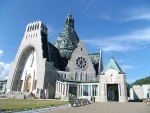 Basilique de Notre-Da
Basilique de Notre-Da
me-du-Cap, 2010 -
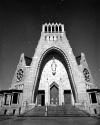 Basilique de Notre-Da
Basilique de Notre-Da
me-du-Cap, Cap-... -
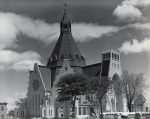 Basilique de Notre-Da
Basilique de Notre-Da
me-du-Cap, vers...
-
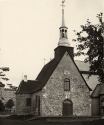 Cap-de-la-Madeleine -
Cap-de-la-Madeleine -
Sanctuaire Not... -
 Carte postale montran
Carte postale montran
t le pont des C... -
 Carte postale montran
Carte postale montran
t le Sanctuaire... -
 Carte postale souveni
Carte postale souveni
r du Cap-de-la-...
-
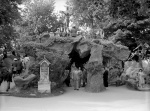 Chemin de croix et gr
Chemin de croix et gr
otte à Notre-Da... -
 Chemin du Rosaire, 20
Chemin du Rosaire, 20
10 -
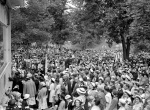 Foule de pèlerins à N
Foule de pèlerins à N
otre-Dame-du-Ca... -
 Foule de pèlerins au
Foule de pèlerins au
sanctuaire du C...
-
 Grotte du sanctuaire
Grotte du sanctuaire
de Notre-Dame-d... -
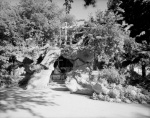 Grotte du sanctuaire
Grotte du sanctuaire
de Notre-Dame-d... -
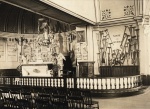 Intérieur du sanctuai
Intérieur du sanctuai
re Notre-Dame-d... -
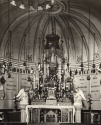 Intérieur du sanctuai
Intérieur du sanctuai
re Notre-Dame-d...
-
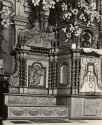 Intérieur du sanctuai
Intérieur du sanctuai
re Notre-Dame-d... -
 L'une des allées bois
L'une des allées bois
ées du sanctuai... -
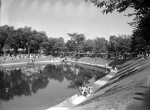 Lac Sainte-Marie avec
Lac Sainte-Marie avec
îlot où se dre... -
 Lac Sainte-Marie, san
Lac Sainte-Marie, san
ctuaire du Cap-...
-
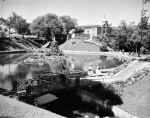 Lac Sainte-Marie, san
Lac Sainte-Marie, san
ctuaire du Cap-... -
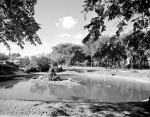 Lac Sainte-Marie, san
Lac Sainte-Marie, san
ctuaire du Cap-... -
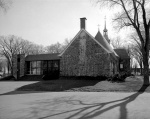 Lieu historique du Sa
Lieu historique du Sa
nctuaire au Cap... -
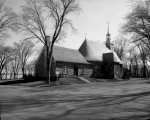 Lieu historique du Sa
Lieu historique du Sa
nctuaire au Cap...
-
 Marche aux flambeaux
Marche aux flambeaux
à Notre-Dame-du... -
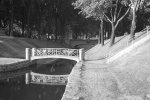 Petit pont du sanctua
Petit pont du sanctua
ire du Cap-de-l... -
 Petit sanctuaire du C
Petit sanctuaire du C
ap-de-la-Madele... -
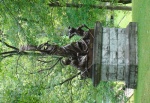 Plan rapproché du che
Plan rapproché du che
min du Rosaire,...
-
 Plaque commémorant le
Plaque commémorant le
«prodige des y... -
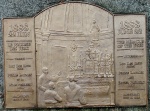 Plaque commémorant le
Plaque commémorant le
«prodige des y... -
 Plaque commémorant le
Plaque commémorant le
«prodige du po... -
 Pont des chapelets à
Pont des chapelets à
Notre-Dame-du-C...
-
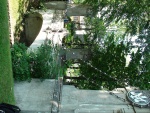 Pont des chapelets à
Pont des chapelets à
Notre-Dame-du-C... -
 Pont des chapelets du
Pont des chapelets du
sanctuaire de ... -
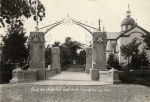 Pont des chapelets et
Pont des chapelets et
sanctuaire Not... -
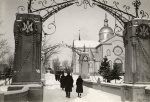 Pont des chapelets et
Pont des chapelets et
sanctuaire Not...
-
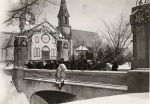 Pont des chapelets et
Pont des chapelets et
sanctuaire Not... -
 Procession de pèlerin
Procession de pèlerin
s autour du lac... -
 Procession de pèlerin
Procession de pèlerin
s autour du lac... -
 Procession de pèlerin
Procession de pèlerin
s autour du lac...
-
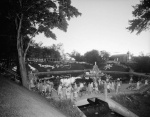 Procession de pèlerin
Procession de pèlerin
s autour du lac... -
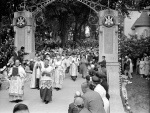 Processions sur le po
Processions sur le po
nt des chapelet... -
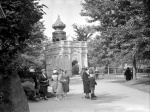 Réplique du tombeau d
Réplique du tombeau d
u Christ Notre-... -
 Sanctuaire - Shrine,
Sanctuaire - Shrine,
Notre Dame du C...
-
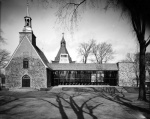 Sanctuaire de Notre-
Sanctuaire de Notre-
Dame-du-Cap, 19... -
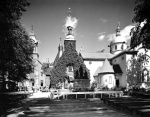 Sanctuaire de Notre-D
Sanctuaire de Notre-D
ame-du-Cap, Cap... -
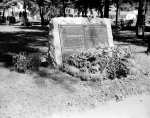 Sanctuaire de Notre-D
Sanctuaire de Notre-D
ame-du-Cap, Cap... -
 Sanctuaire du Cap-de-
Sanctuaire du Cap-de-
la-Madeleine, 1...
-
 Sanctuaire du Cap-de-
Sanctuaire du Cap-de-
la-Madeleine, p... -
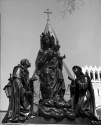 Sculpture représentan
Sculpture représentan
t l'Annonciatio... -
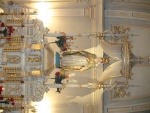 Statue de la Vierge d
Statue de la Vierge d
ans le petit sa... -
 Vue aérienne - au pre
Vue aérienne - au pre
mier plan la no...
-
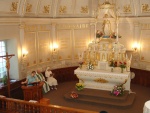 Vue intérieur du peti
Vue intérieur du peti
t sanctuaire du... -
 Vue latérale du pont
Vue latérale du pont
des chapelet, 2... -
 Vue rapprochée de la
Vue rapprochée de la
statue de la Vi...
Hyperliens
- Our Lady of the Cape Shrine
- La dévotion populaire au sanctuaire de Notre-Dame-du-Cap – Inventaire du patrimoine religieux immatériel du Québec (IPIR)

